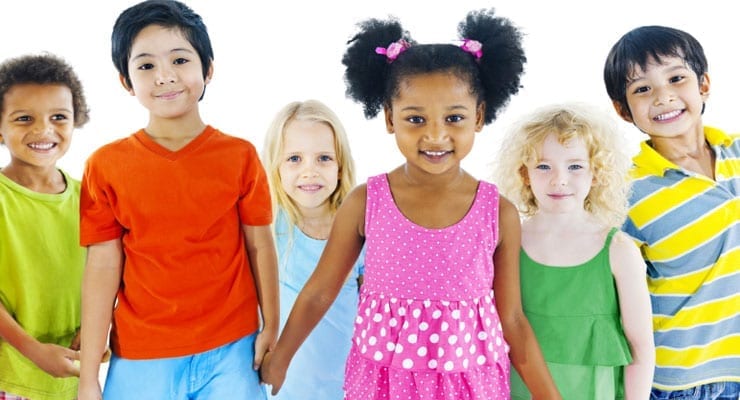As parents, we set out to give our children the best possible chance at success through feeding them well, raising them in clean and healthy environments, teaching them valuable lessons, and making sure they strive for excellence in school and extracurriculars. Even with the best of intentions, there are still many hurdles to parenting that leave us dazed, dumbfounded, and frustrated as we tackle tantrums, weird colds that won’t go away, and…heavier issues.
One such issue faces all families with small children, but is dealt with in different ways across the board. It’s the issue of race, ethnicity, and to a large degree, identity. Much like the “Where do babies come from?” and, “Why do they have a baby if they’re not married?” types of questions, teaching children what race and ethnicity are, and what they mean (or shouldn’t mean) to them can be another biggie.
It’s the elephant in the room.
Rather than fidget awkwardly around it, I say we hug it.
Children are perceptive and observant, and they take notice of things like differences in hair color, hair texture, eye color, and skin tone. That’s okay. After all, as people we are each different. With acceptance and equality as the foundation of our answers to them, I don’t think it’s wrong to acknowledge that their best friend’s skin is different from theirs and explain that the reason for this is because of a difference in race, nor is it bad to tell them that another child’s hair might be different in texture from theirs due to different heritage when they ask. I think that deflating the ethnic bubble opens the way for our children to forge positive relationships based on similarities beyond just physical appearance. By the same token, as more and more news stories bubble to the surface and influence definitions of what it means to be race X, Y, or Z in the United States, a shared acknowledgment and acceptance of others can only help calm the polarizing narrative.
So, when your child brings up the topic of race, don’t shudder or tiptoe. Answer them honestly and clearly. Tell them to be proud of who they are, but encourage them to celebrate others as well. Let them know not to stare or point at the family standing in the next check-out line, but explain that our world is filled with all kinds of people, each who eat and breathe as they do, and practice their own customs and traditions similarly. Hug the seemingly monstrous elephant. After all, they like affection.





